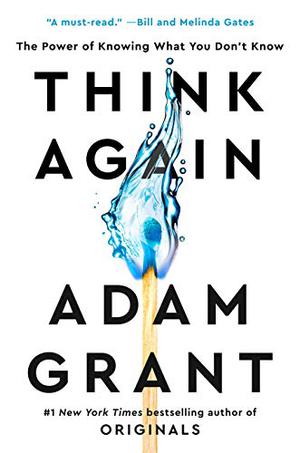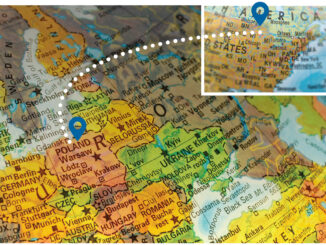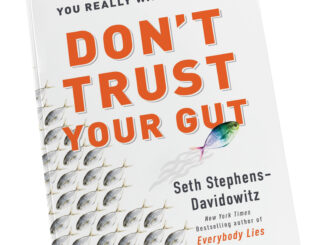Reviewed by Caryn Goldsmith, Principal, Goldsmith Strategic Services, LLC, Los Angeles, California, caryn@goldsmithstrategicservices.com
To me, the worst word in English is complacency, so the Think Again title caught my attention, and I wasn’t disappointed. Author Adam Grant (a psychologist, Wharton professor, and best-selling author) feels that constantly revising our thinking can help us master our craft—just the opposite of complacency.
This book’s goal of challenging people to rethink how they approach building and executing the day-to-day aspects of their business is in sync with the goal of QRCA’s Qualology Learning Hub (QLH), where you can find recordings of QRCA webinars, conference presentations, discussion sessions, and certificate learning programs. QLH can be found at https://qualology.qrca.org/.
Throughout the book, Grant emphasizes that we must think like scientists to have any chance of avoiding confirmation bias and desirability bias. We should never close our minds to what we don’t know—and we can learn from everyone, regardless of status.
One of my biggest takeaways from the book is to develop a trusted challenge network both at work and at home. These networks are made up of people who are not afraid to disagree, but always do so with the intention of helping you or making the process better. This may mean researchers should screen for research participants who are “constructively disagreeable” on assignments requiring reactions to ideas and other forms of stimuli.
Grant also feels we should not stay static in how we approach business, and that we need to constantly rethink and reexamine. He therefore strongly suggests that we retire the idea of “best practices,” which suggests that the best route is to follow a fixed process. He feels it stifles change because it implies there is no room for improvement.
A third major idea Grant shares is that we should learn to practice confident humility, which is about having confidence in ourselves and being humble in approaching everything with fresh eyes and a willingness to learn. I believe that many QRCA members practice confident humility when listening and learning from research participants, and defer to clients’ knowledge when helping them find answers to their burning issues. The openness of how QRCA members listen and ask questions is critical, and Grant has great examples of how qualitative researchers can apply this principle. By practicing confident humility, researchers, and humans, avoid the trap of acting like a “preacher, prosecutor, or politician.”
Grant contends that we all are more likely to change our minds if we convince ourselves versus someone arguing with us. Giving people space to discuss their own list of pros and cons is a successful strategy for learning how people, and even we, think. Asking people, “How do you know that?” is critical to help them develop thoughts. Allowing time in research sessions for people to do this may allow us to see how they work through the inconsistencies in their own arguments.
To help create this space for self-reflection, Grant stresses that we need to avoid binary bias. For example, the climate debate doesn’t consist just of believers and nonbelievers (binary), but concerned versus alarmed believers and cautious, disengaged, doubtful, and dismissive nonbelievers. With nonbinary options, people are less inclined to dig in and take sides.
There is a great recap at the end of the book which highlights Grant’s top thirty “actions of impact.” I will turn to that to trigger a reminder to “practice the art of persuasive listening” or to avoid scorecards because a “good [new] process with a bad outcome might be a great experiment,” which could take a business in a new direction.
The proof that my mind has been further opened is the fact that in the two days after finishing this book, I’ve mentioned something I learned—and used what I learned in one instance—five times. A worthwhile read, indeed!




